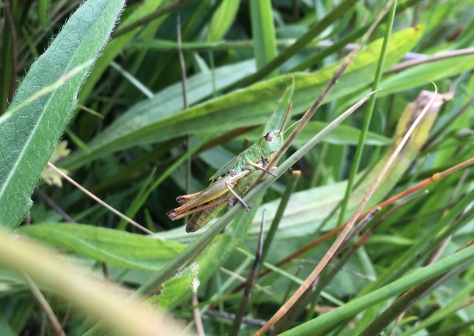Heath Week is a week long string of events to celebrate and share the wonderful heathland of East Devon. Timed to tie in with the summer holidays, it was all hands on deck to get Bystock ready for the heath week open day on the 25th of July! A new bridge went in with the help of the Bystock volunteer group, and Ed was running around making sure everything was as it should be for the public to enjoy the reserve. Whilst digging holes to set the supporting posts for the bridge, I was treated to my first ever sighting of a White Admiral – a lovely black and white butterfly that although found widely in southern England has shown a rapid, as yet unexplained decline in the last 20 years (http://butterfly-conservation.org/679-710/white-admiral.html).
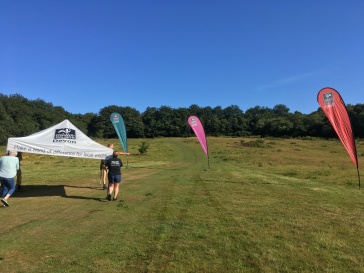
The day came, and we were lucky to have the sun on our side as we set up gazebos, signs and stalls. My task for the day was to be part of a team supervising the pond dipping. I have to confess my knowledge of pond life was, before the day, probably about as extensive as that of some of the children taking part, if not inferior to! Luckily we had identification guides on hand, and by the end of the day I, children and parents alike had learnt a lot about the abundant wildlife living in the Bystock pond.
My newly acquired pond dipping skills were not to be wasted, as a few days later it was time for the Magnificent Mires Family Fun Day up on the moor! Organised as part of the Magnificent Mires project, aimed to educate and raise awareness surrounding the fascinating and invaluable mire found on Dartmoor, the day saw guided walks, crafts, information stands and boggy pond dipping! Luckily for me the pond life didn’t differ much between Bystock Pond and Emsworthy bog, so I could help the families identify most of what they fished out. My favourite pond dwelling beast has got to be the caddisfly larvae – pictured below, it builds a case around itself out of tiny fragments of stone, vegetation and sticks to create the perfect camouflage. Also featured were little newts, dragonfly larvae, damselfly larvae and of course, the pond dipping icon, the water boatman! As well as pond life, we were encouraging visitors to have a look at the plants that live in the Mire, such as Bog-Pimpernel, marsh St Johns Wort and Round-leaved Sundew. The latter is pictured below, a carnivorous plant that eats insects!
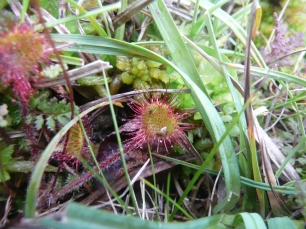

In between days spent helping out at events, we pulled balsam, cut bracken and cleared paths. I visited a new site, Lower East Lounston, a small but beautiful patch of woodland with a grassy glade at one end. The vegetation had grown up and smothered most of the footpath, so we went in with brushcutters and opened it up in no time! We discovered a large Ash had come down, and fallen into the neighbours land. We returned a week later with Andy’s chainsaw to clear the tree, involving a good team effort to move all the timber once cut up! Straight in at the deep end for Sara-Jane, the newest addition to the team at Woodah, who completes the quota for volunteer trainees for the year.
The last few days have been exciting from a botanical point of view. Last Friday I visited Clayhidon Turbury with Ed and Sara-Jane to do some bracken clearance, and we came across a very strange looking plant called Dodder! It is a parasitic plant found most commonly in heathlands growing on gorse and heather. A member of the bindweed family, it has no roots and climbs with thread-like reddish stems over its host plant. I had never seen it before, but it won’t be one I forget anytime soon!
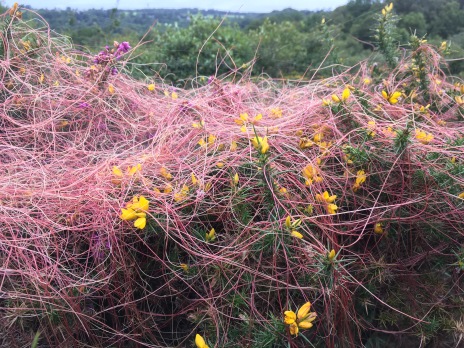
Yesterday we helped out a member of the Dartmoor National Park team in counting the Toadflax-leaved St John’s Wort (Hypericum linariifolium) at Dunsford. Found only in south Devon, west Wales and the Channel Islands, it is a very rare plant, therefore monitoring numbers is key to keep an eye out for any decline. Part of the reason for its scarcity is its preferred habitat – sunny rocky outcrops with minimal competition from other plant species. ‘Rocky outcrops’ brings to mind anything from a pile of boulders to a vertical cliff face, and on this occasion I discovered that we really were going to be in for a scramble! Our climb was well rewarded with the a stunning view down over the reserve, and over 1000 individual plants counted across three rocky faces.
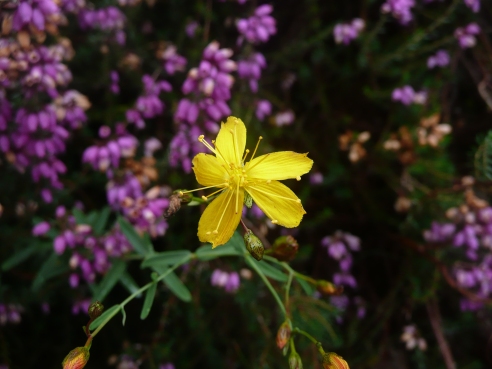

To add to the rare plant sightings, today we were working at Andrew’s Wood, one of only a handful of places in Britain where you can find Heath Lobelia. A striking purple-flowering wildflower that people travel from far and wide to have a look at! Although national rare, at Andrew’s Wood there is no shortage of it – it will be interesting to hear what this years count comes to in total! The purpose of our visit was not, in fact, to ogle at this rarity, but to clear the footpaths and conduct a butterfly survey. Our count was very positive, with many different species spotted – Peacock, Red Admiral, Green-veined White, Small Skipper, Comma, Gatekeeper and Meadow Brown (and probably a few more i’ve forgotten!).
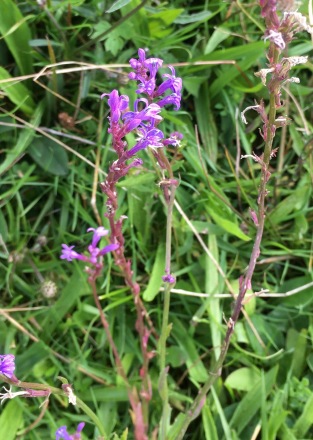
I can’t believe how quickly this year is going – already it is August, and the nights are beginning to draw in as I begin my fourth month here at Woodah. I am so grateful for the wonderful staff here for teaching me so much already, I cannot wait to see what the next few months will bring!
